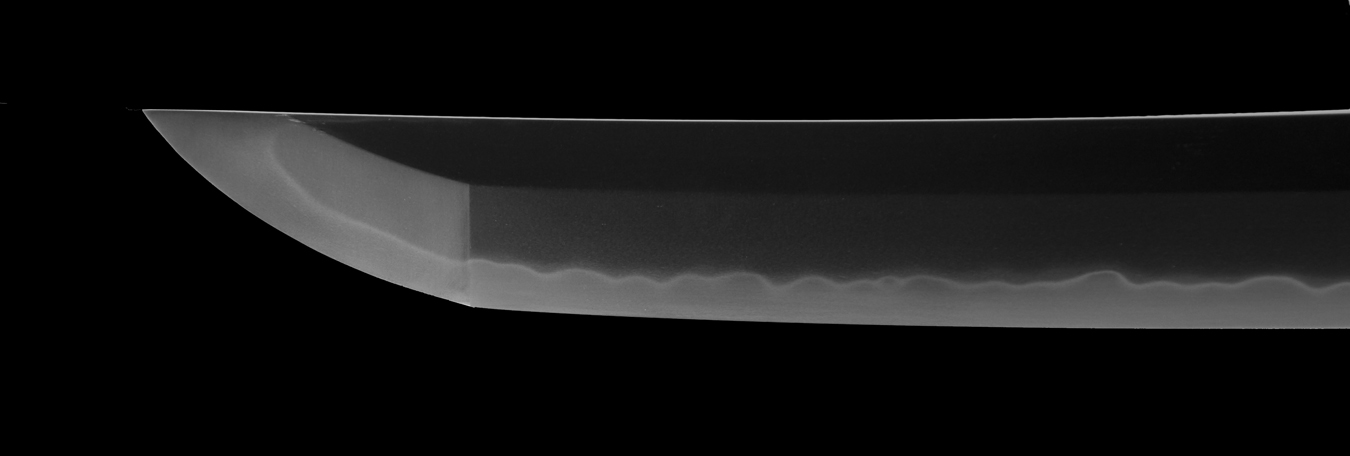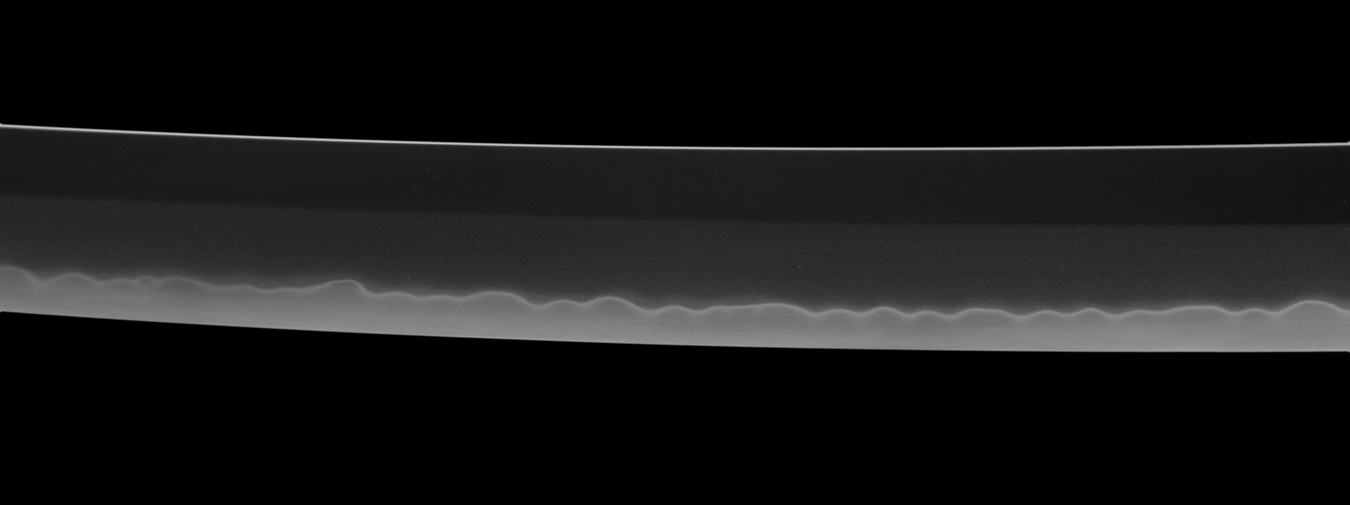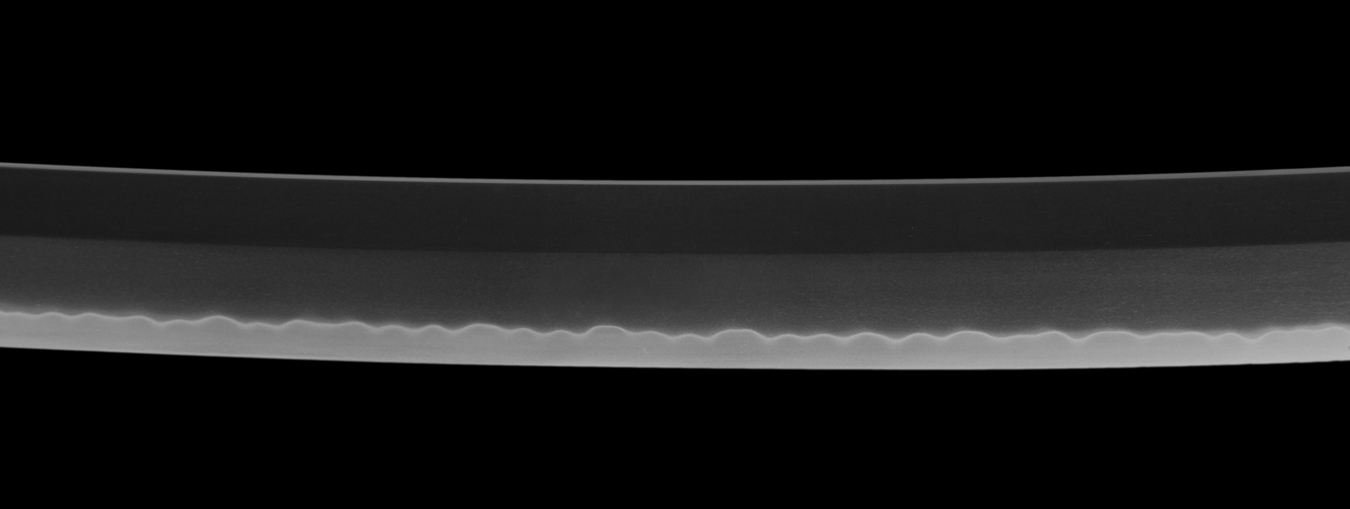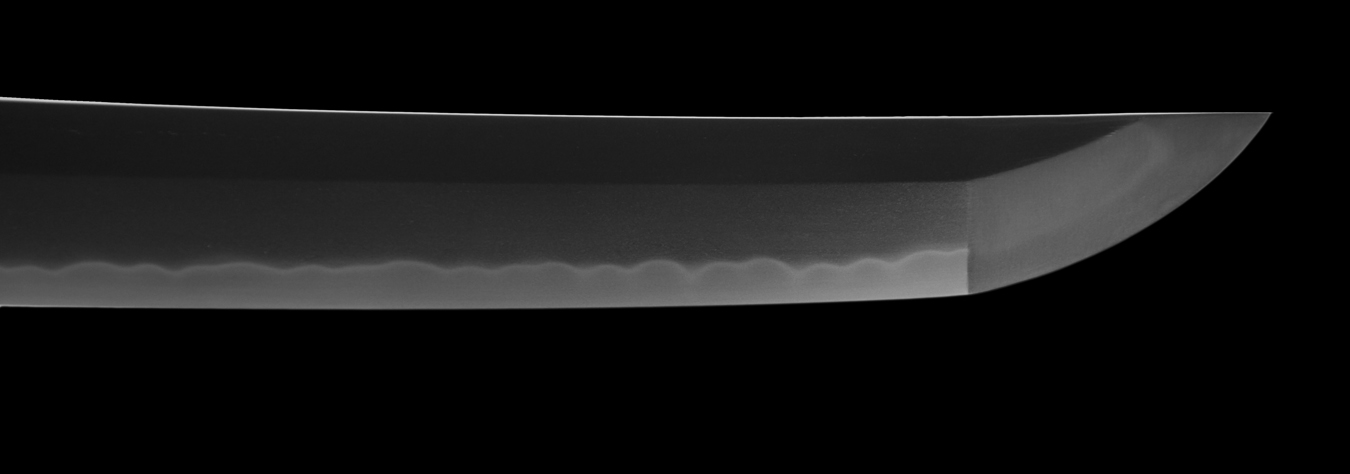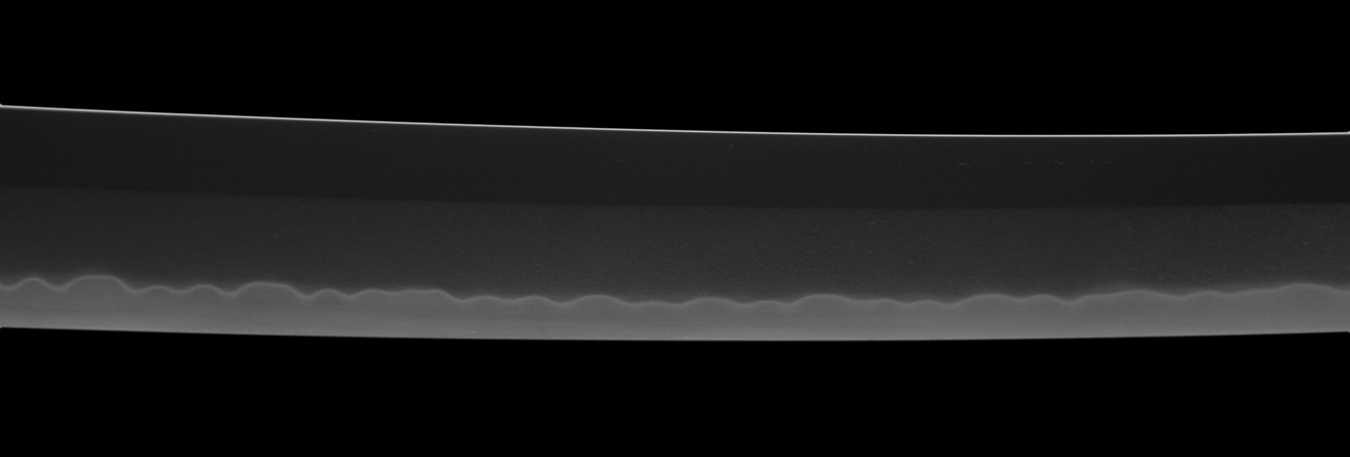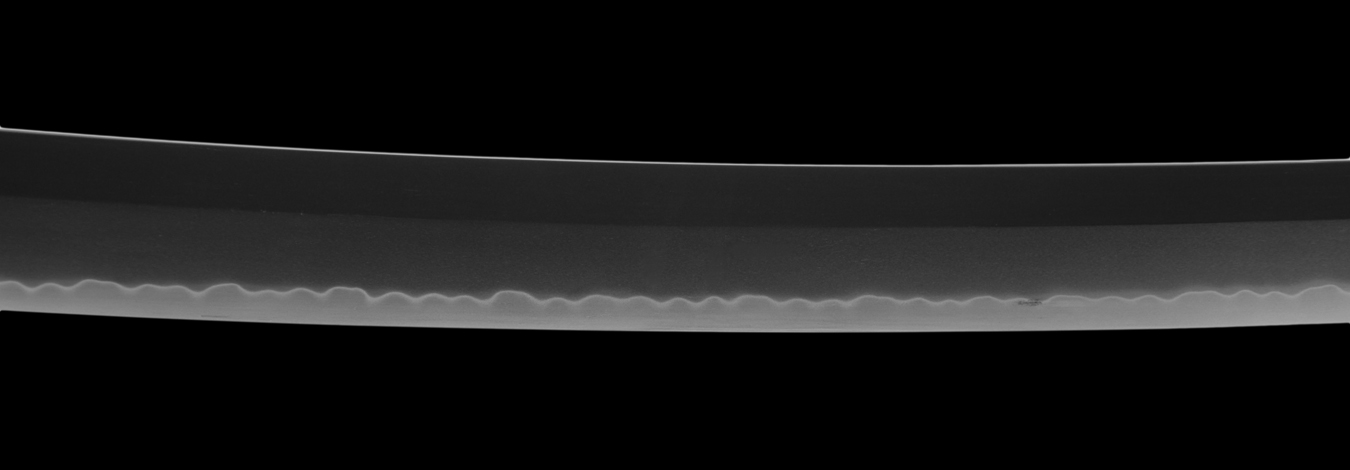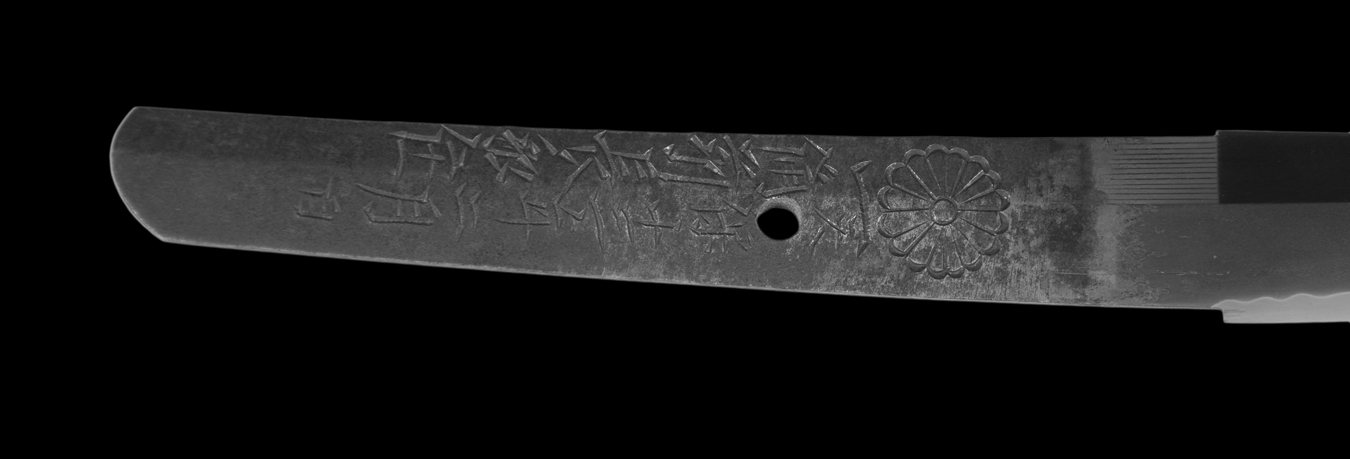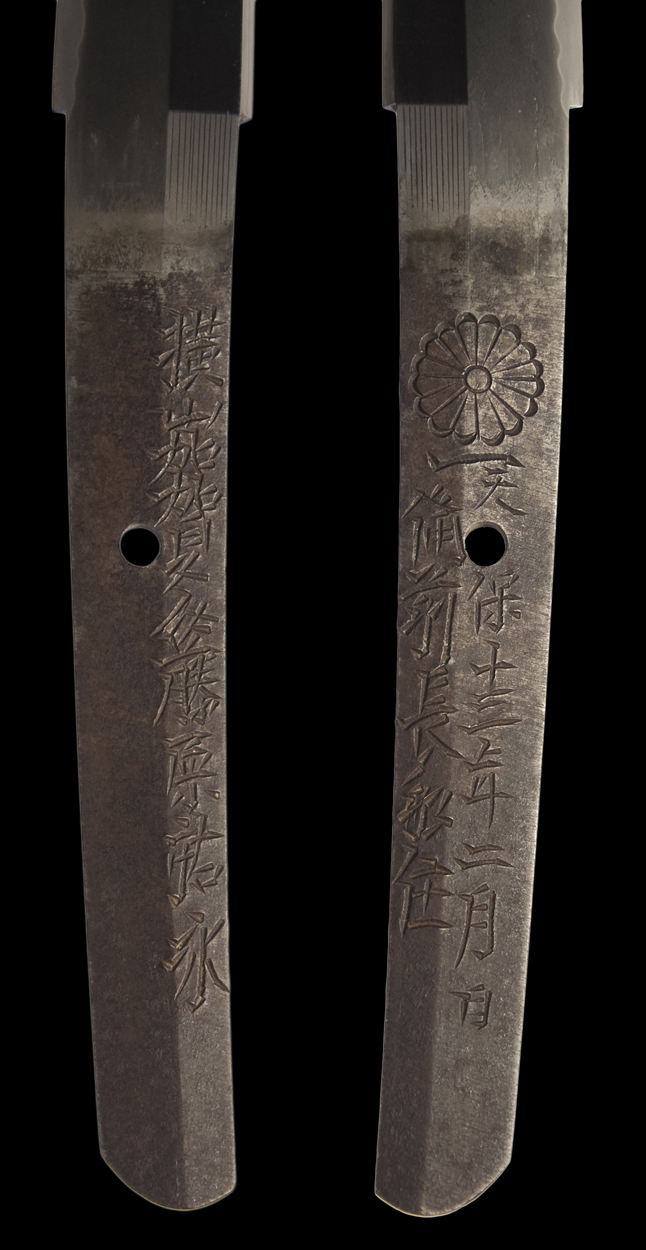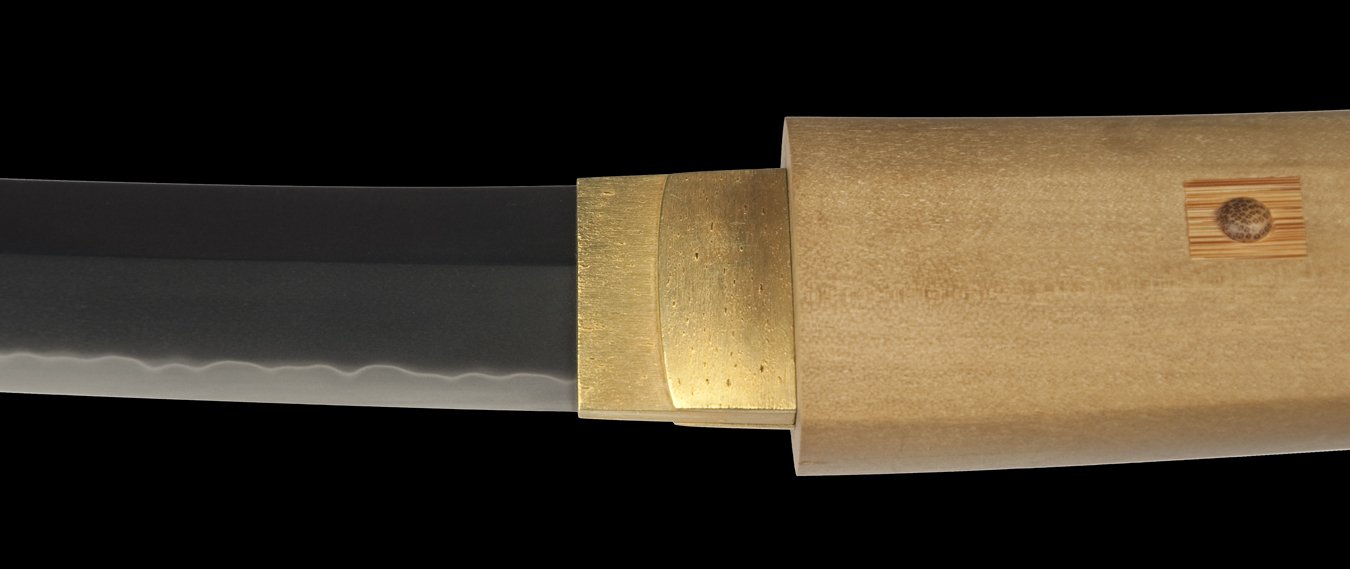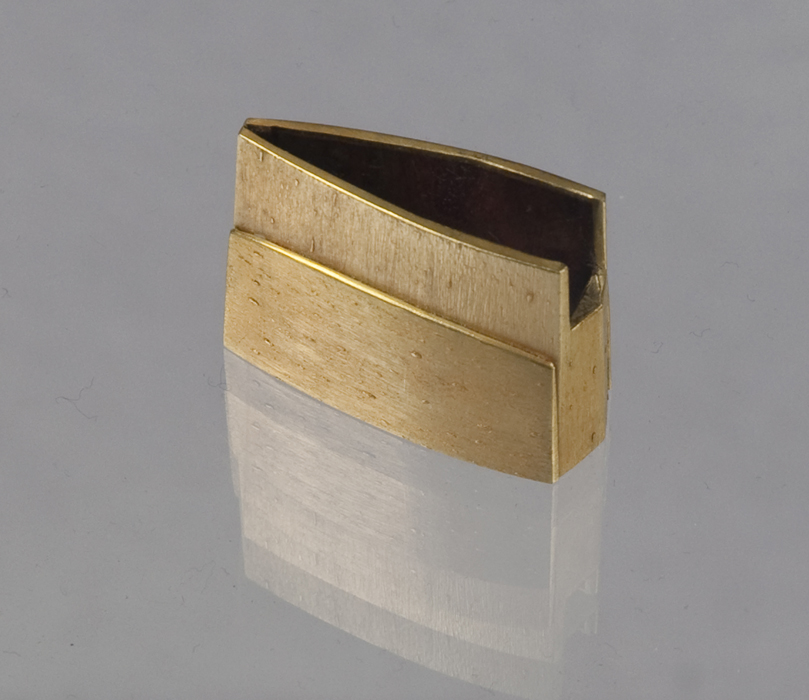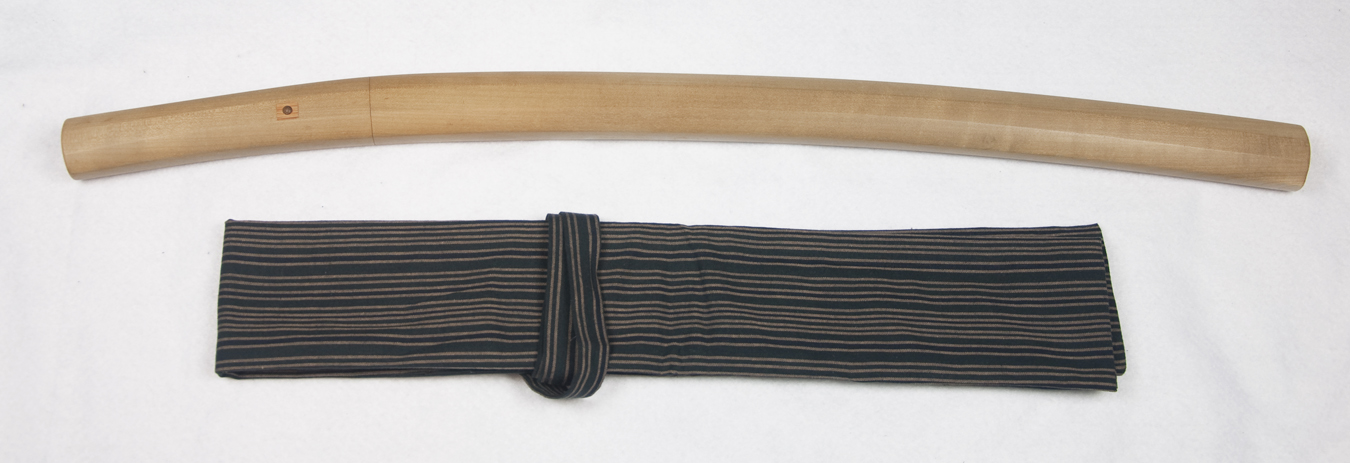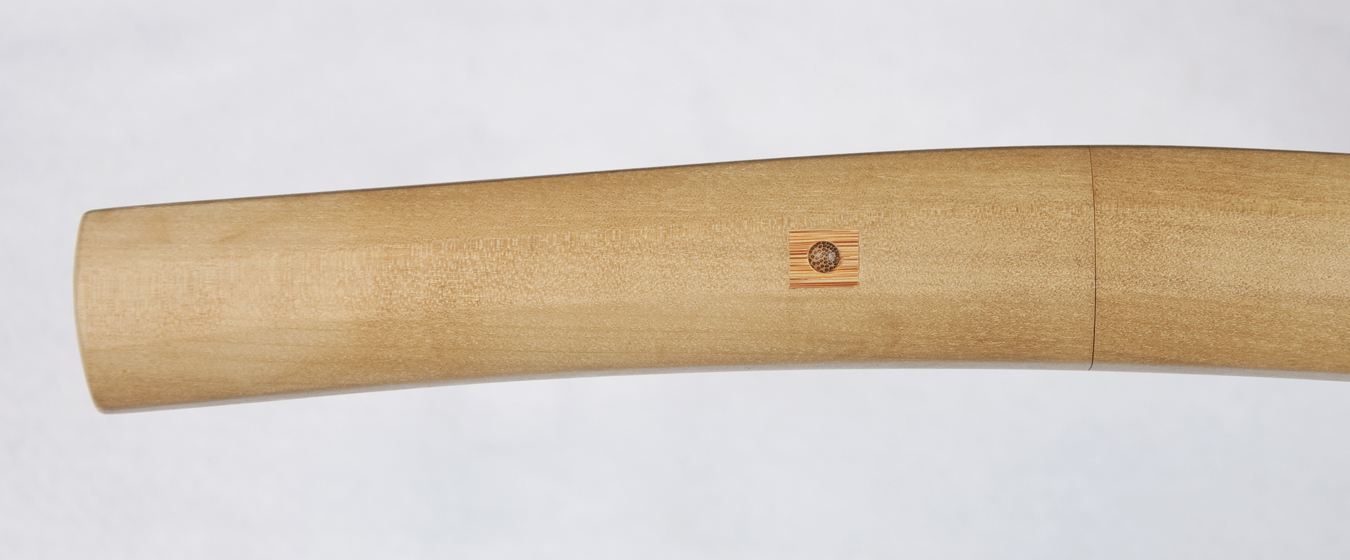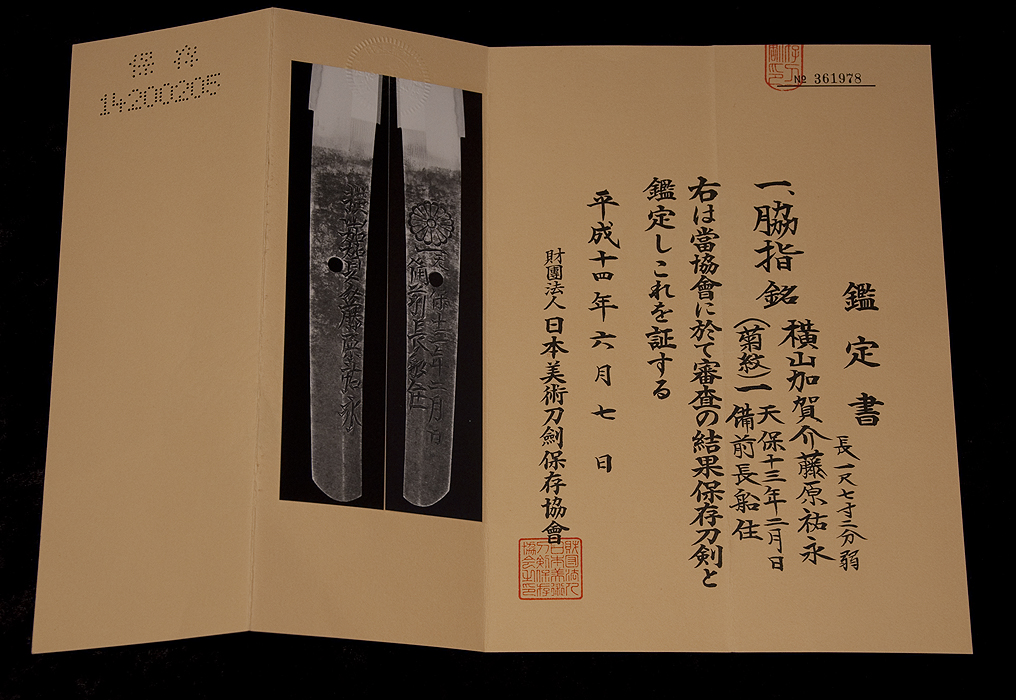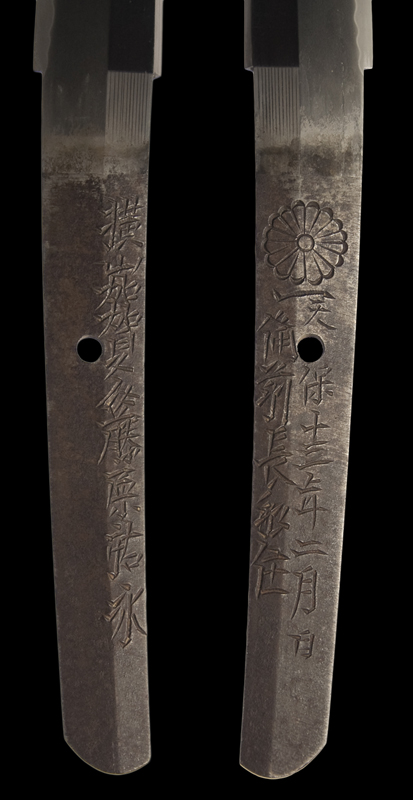|
| |||||||||||||||||||||||||||||||||||||||||||||||||
Hamon : Nioi deki sugu gunome midare with ko choji mixed in. The nioi guchi is tight and luminous. There are many ashi.
Boshi : O-maru. The kaeri ends just below the yokote with a rounded tip.
Kitae : Tight ko-itame hada becoming muji-hada. Ji-nie made of ko-nie can be seen covering the ji. Midare utsturi is present and especially clear in the koshi of the blade.
About this sword : This is a wakizashi by the famous smith, Bizen Yokoyama Sukenaga. He is the top ranked shin-shinto Bizen Yokoyama smith. He is ranked as Jo Saku by Fujishiro, given 70 points by Hawley and valued at 2.8 million yen in the Toko Taikan. He was most active in the Tenpo period(1830-1844). Sukenaga was the second son of Sukehira and was his successor because the first-born son, Sukemori, was adopted by the 11th generation Shichibei Sukesada. This blade was made in prime of Sukenaga's life at 48 years of age in February of 1842. Sukenaga passed away on June, 2nd 1851. Sukenaga signed some of his works with a chrysanthemum and the character for "Ichi" as with this example. His works are highly sought after as representative examples of top level shin-shinto and the Bizen Yokoyama tradition.
This blade is flawless and in full polish. The workmanship shows excellent control and consistency in both the forging and tempering. The nioi guchi is the same brightness and thickness throughout the entire hamon. Even the return of the boshi shows this high level of yaki-iri control. This work has a feeling of aiming at old koto. It does not have his typical sugu yakidashi and the gunome hamon is sugu-based. The jigane is flawless and has light midare utsuri. It is unusual to see utsuri in shin-shinto and this is certainly a testament to Sukenaga's skill. There are a couple of light and small scratches on the blade and one small surface belmish (see photos).
The mei of this blade is a textbook example of Sukenaga's jishin saku mei (a blade he made himself rather than a shop-made blade). The nakago is dated and includes the "kiku ichi" he was known to use. The mei is cut with strength and pride. The blade comes with a gold foil double habaki, shira saya with bamboo inserts, padded cotton storage bag and an NBTHK Hozon paper. An ubu, signed, dated, papered, polished, mainline, flawless, healthy, Jo saku work.
SOLD


